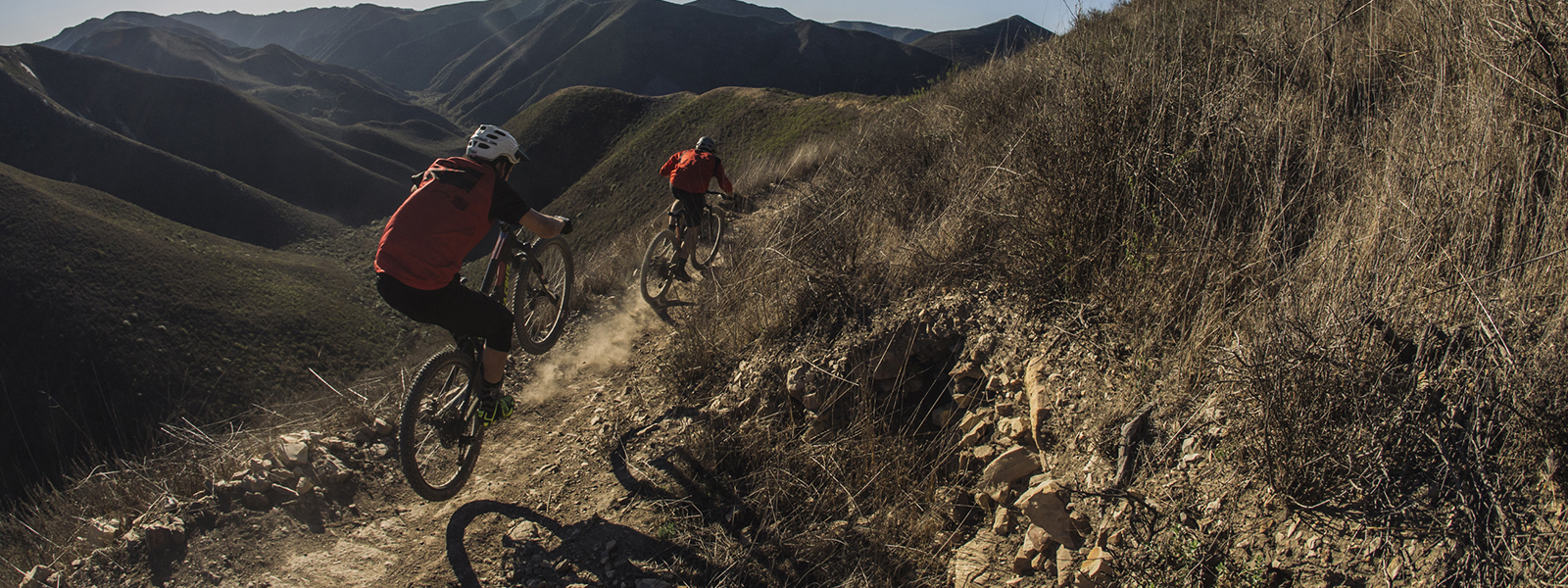February is American Heart Month! Since heart disease is the leading cause of death for both men and women in the US, we thought now would be a good time to talk about the benefits cycling has for your heart health, how to improve it, and the tools you need to make sure your ticker keeps on ticking for years to come.
What are the benefits?
 Study after study has shown that cycling has benefits for your long-term heart health, and you don’t have to ride a century after work every day to experience them. In a study of nearly 24,000 Swedish people, the Journal of the American Heart Association found that those who biked to work were a lot less likely to become obese or suffer from hypertension, prediabetes, or high triglycerides than non-cyclists. And in another study of 45,000 Danes, those who cycled as little as 30-60 minutes a week had fewer heart attacks than non-cyclists during a 20-year period.
Study after study has shown that cycling has benefits for your long-term heart health, and you don’t have to ride a century after work every day to experience them. In a study of nearly 24,000 Swedish people, the Journal of the American Heart Association found that those who biked to work were a lot less likely to become obese or suffer from hypertension, prediabetes, or high triglycerides than non-cyclists. And in another study of 45,000 Danes, those who cycled as little as 30-60 minutes a week had fewer heart attacks than non-cyclists during a 20-year period.
But it’s not just your heart that benefits from cycling. Cycling is a low-impact sport, so it’s easier to sustain throughout old age than running, which can aggravate joints. Aerobic exercise also triggers endorphin release — the brain’s feel-good chemicals. Cycling promotes balance and body control, which come in handy when walking, carrying heavy weight, climbing stairs, you name it. And it promotes muscle and bone growth without over-exerting them, keeping you upright and healthy for longer.
 What’s heart rate training?
What’s heart rate training?
Heart rate training is basically what it sounds like: it’s a form of training that focuses not on pace, speed, weight, or power, but on keeping your heart rate in certain “zones” for set intervals. Often, zones are expressed as a fraction of your maximum heart rate, so it’s useful to know that.
Maximum heart rate is the fastest your heart can beat and still keep up. The heart is a muscle, and there is a limit to how fast it can physically flex and relax in order to move blood through your body. It’s not that you’ll hurt yourself if you go over it, you simply can’t.
Max HR is traditionally calculated by subtracting your age from 220 (I’m 29, so theoretically my max HR is 191), and while that’s a good quick-and-dirty way to get a rough number, it’ll vary 5-10% from person to person based on genes and activity level. The best way to figure out your max HR is to go out there and push yourself. Wear a heart rate monitor (more on those later). Find a steep hill and, making sure you’re warmed up properly, ride up the hill at a decent pace, but not max effort. You’re just getting a sense of gear ratios.
Once you’ve figured out what gear you’ll want, go back down and now ride up the hill four times, increasing your intensity every 30 seconds or so on each climb until you simply can’t push any harder, then riding back down. You’ll get slower as you wear yourself out, but that’s sort of the point. Remember, this isn’t about speed or power but about effort. Once you’re finished with your four ascents, cool off on something easy and flat.
Now go back and check your HR data from the monitor you were wearing. Whatever your highest heart rate was during that ride, that’s your max. When I tried this out, I maxed out at 193, so the rough estimate was pretty close, but it’s good to know for sure. Ideally, you’d combine a heart rate monitor with a power meter to tell you how hard your heart has to work to push your legs, but power meters can be very expensive. Now, let’s talk zones.
Heart rate zones
There are five zones, and while there’s no perfect way to figure out the lines between them, there are some things you can look for.
 Hardly Working: Zone 1 is basically the minimum effort you can put in without lying down. In zone 1, your heart rate is at around 60-65% of your max, your muscles are starting to loosen up, and your body temperature climbs slightly. For obvious reasons, this is the zone you’re in when you’re warming up. Walking around on flat ground or riding out of your neighborhood is likely to be zone 1. You should be able to talk freely. If you’re already in good shape, Zone 1 won’t feel like a workout at all.
Hardly Working: Zone 1 is basically the minimum effort you can put in without lying down. In zone 1, your heart rate is at around 60-65% of your max, your muscles are starting to loosen up, and your body temperature climbs slightly. For obvious reasons, this is the zone you’re in when you’re warming up. Walking around on flat ground or riding out of your neighborhood is likely to be zone 1. You should be able to talk freely. If you’re already in good shape, Zone 1 won’t feel like a workout at all.
 Walk and Talk: You can still have full conversations in Zone 2, and it still feels easy in the moment, but after a few hours you’ll start to tire out. If you go out for a long ride on a casual Saturday afternoon, you’re probably spending most of it in Zone 2. You can probably breathe with your mouth closed for short intervals, you can look around you, you can still listen to podcasts, and so on. Your heart rate is around 65-75%. This is a long-haul zone.
Walk and Talk: You can still have full conversations in Zone 2, and it still feels easy in the moment, but after a few hours you’ll start to tire out. If you go out for a long ride on a casual Saturday afternoon, you’re probably spending most of it in Zone 2. You can probably breathe with your mouth closed for short intervals, you can look around you, you can still listen to podcasts, and so on. Your heart rate is around 65-75%. This is a long-haul zone.
 No Man’s Land: Zone 3 is kind of a weird zone. Your heart rate is around 75-85% of max. You’re pushing too hard to get the benefits of a relaxing recovery ride like lactic acid removal and glycogen recovery, but not hard enough to get faster or stronger by pushing your threshold. You can still talk, but probably only in short phrases. Zone 3 isn’t helping you get better, it’s just a stepping stone to the higher ones.
No Man’s Land: Zone 3 is kind of a weird zone. Your heart rate is around 75-85% of max. You’re pushing too hard to get the benefits of a relaxing recovery ride like lactic acid removal and glycogen recovery, but not hard enough to get faster or stronger by pushing your threshold. You can still talk, but probably only in short phrases. Zone 3 isn’t helping you get better, it’s just a stepping stone to the higher ones.
 Working Hard: Zone 4 kicks in at around 80-90% of your max HR (155-175 in the example I used earlier), and you’re really working now. You might be able to gasp out a word or two at a time, but talking is pretty much out of the question at this point. If you can sustain this level of effort for more than an hour, you’re still in Zone 3. Your breathing is labored, your limbs are heavy and you feel like you want to stop as soon as possible.
Working Hard: Zone 4 kicks in at around 80-90% of your max HR (155-175 in the example I used earlier), and you’re really working now. You might be able to gasp out a word or two at a time, but talking is pretty much out of the question at this point. If you can sustain this level of effort for more than an hour, you’re still in Zone 3. Your breathing is labored, your limbs are heavy and you feel like you want to stop as soon as possible.
 Maxed Out: Zone 5 is for training purposes only. It’s useful to increase “VO2 max” (the maximum amount of oxygen your body can process at a time), which can help with high-altitude rides, and will also help with short sprints and hills, but you shouldn’t be able to sustain this pace for more than a couple of minutes, maybe less. Your muscles are burning, you feel like your lungs can’t keep up (they can’t), and speaking is not an option. This is the zone where you can feel your heartbeat in your ears. That kind of thing.
Maxed Out: Zone 5 is for training purposes only. It’s useful to increase “VO2 max” (the maximum amount of oxygen your body can process at a time), which can help with high-altitude rides, and will also help with short sprints and hills, but you shouldn’t be able to sustain this pace for more than a couple of minutes, maybe less. Your muscles are burning, you feel like your lungs can’t keep up (they can’t), and speaking is not an option. This is the zone where you can feel your heartbeat in your ears. That kind of thing.
So what are they for?
 There are hundreds if not thousands of heart-rate-zone workouts available online, which jump between zones in a variety of different ways, but the basics are as follows:
There are hundreds if not thousands of heart-rate-zone workouts available online, which jump between zones in a variety of different ways, but the basics are as follows:
Zone 1 and 2 are for warmup, so you don’t hurt your joints and tendons or pull a muscle when you start pushing harder. They’re also for cooldown, to get rid of lactate buildup before you end your workout. They’re great zones for recovery — if you’re sore from a previous workout, a long, leisurely ride can get bloodflow going and purge any leftover lactic acid without creating more. And finally, they’re fun! There’s no rule that says every ride you do has to be about training and stats and pushing the envelope of performance. Sometimes you just want to ride a winding road on a warm day, and we applaud that.
Zone 4 and 5 — notice that I skipped Zone 3 because it’s that weird middle zone — are for training. You want to get better, faster, stronger than you are, and these zones are how you’re going to get there. The beauty of heart rate training is that it doesn’t really matter how fast you go, as long as you’re putting out the right effort. Sure, your sprint might not be as fast as that one guy on Strava whose PR is better than yours on every ride, but if you’re trying just as hard, you’re getting just as much benefit out of it. The other advantage of training HR zones is that they won’t change as you improve. If you make it a goal to climb a certain hill in a certain amount of time, eventually you’ll get stronger and that same hill won’t be a challenge any more. But if you make it a goal to maintain Zone 5 for 120 seconds, that’ll be a brutal workout whether you’re an average Joe or Chris Froome.
And even if you’re not specifically training HR zones, you can go back and look at your weekend ride and see how much time you spent in each zone to get a sense of what your workout is doing for you.
Heart rate monitors
Of course, to do any of this, you’ll need a heart rate monitor. These come in wrist-mounted (also called “optical”) and chest-mounted varieties. If you plan to train heart rate zones, you’ll also need to make sure that your monitor of choice will hook up to a screen of some sort. Lots of heart rate monitors have Bluetooth or ANT+ capability, so they can show you live data on your phone, bike computer, or laptop (if you’re on a trainer). Generally, chest strap heart rate monitors are more accurate for intense exercise, while wrist-mounted ones are more convenient for tracking daily activity or generating a resting heart rate number (since they track you while you sleep as well).
 Heart rate training myths
Heart rate training myths
Before we go, let’s take a second to dispel some misconceptions about heart rate training.
MYTH: If you go over your max HR, your heart explodes
Or some other dire prediction, like a heart attack or aneurysm. Truth is, most people can handle a minute or two at max HR, and elite athletes can probably go a little longer. Max HR isn’t a warning that you’ll die if you go past it, it’s simply the point where your heart can’t beat any faster. Your heart is a muscle too; it needs energy of its own, and when it gets too tired, involuntary self-preservation kicks in and it slows down. But max HR isn’t inherently dangerous for your heart any more than doing pushups to exhaustion is dangerous for your pecs.
MYTH: Max HR is the same for everyone your age
In the example at the top of this post, I said that I’m 29, so my theoretical max HR based on the old formulas is 191. In reality, my max is closer to 193-195, so the formula was close for me, but that’s not always the case. Max HR is mostly determined by genetics, so the fact that your buddy who’s the same age has a higher max HR doesn’t mean anything about your relative fitness. That’s why we suggest testing it yourself. It is true that your max HR goes down as you get older, but that doesn’t mean you’re getting less fit. Nutrition and training will have more of an effect than max HR.
MYTH: Heart rate is a measure of how hard you’re working
This one is tricky. It’s more accurate to say that it’s a measure of how hard your heart is working. It’s not, however, a measure of how much power you’re putting down. If you rode for three minutes at 200 watts, the third minute would be a much higher HR than the first one. That’s why lots of people use power meters or RPE — rate of perceived exertion, a personal sense of how hard you’re working — alongside their HR meters. Being hungry, hot, or jacked up on caffeine can alter your heart rate too.
MYTH: Anything below max HR isn’t working hard enough
Max HR workouts should be few and far between, not your default. You can definitely overwork yourself and end up in worse shape than you were before. Besides, there’s plenty of benefit to working in Zones 1-4: base fitness, endurance, fat burning, lactate threshold, and seeing some sweet views without feeling like your lungs are on fire.
So grab a heart rate monitor, maybe a trainer if you live somewhere cold, and get after it! If nothing else, the extra heart rate stat will give you an additional insight into the rides you already do.





[…] commuting can be great. It saves money, it’s better for the environment, it’s great for your health, and it’ll make your calves look awesome come swimsuit season. But it’s also more […]